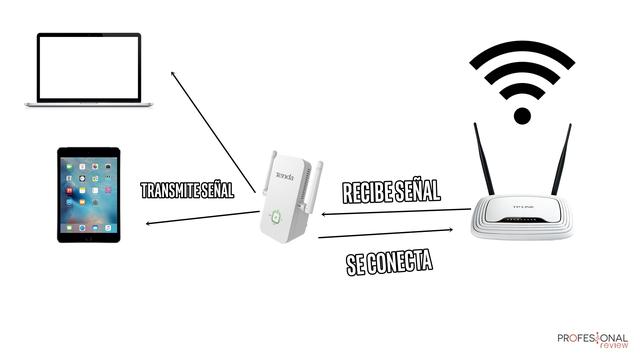Physical components of a network
It is useful to know all the physical components we find on a network. Inside, you'll find what they are and what their function is.
Within a network, there are various components that fulfill their task so that we can connect to the Internet without problems. Many times, we wonder how it will be possible? Well, let's explain to you what physical components are key to running a network.
Content index
Network card or network adapter
In the past, the network card was a PCI expansion card that was installed on our motherboard. In this way, it had port RJ45, as the motherboard of the equipment did not have it integrated. For this reason, it is called the Network interface Card.
At present, we find it integrated into the base plates, providing them with their own Ethernet RJ45 port or Wi-Fi connection. The network card is essential because it allows different devices to connect with each other, sharing resources.
It is the first physical component that comes to mind because of its importance, because without it our PC would not be able to connect to the Internet. The network card brands we most often see are Realtek, gigabit or even Microsoft.
Even if they are integrated now, you can still buy a network card. Typically, they are network cards with Wi-Fi, providing the computer with wireless connection. They are often given in envelopes, as laptops have this possibility as a series. On the other hand, there are more powerful network cards than the plates bring.
And the modem? It is a device whose work is twofold: modular and demodulation of the signal. Basically, it connects us to our operator (ISP), who provides us with the connection. The modem is in charge of transforming the ISP signal into a digital signal to send it to PC / smartphone / tablet / TV.
Cables

We refer to all the wiring we see on a network. Without doubt, it is a key component and we are interested in deepening the transmission medium, as in topology. On the one hand, the type of transmission medium has to do with the performance of the network, as it marks the connection speeds and bandwidth.
In the case of topology, it is related to network security, protocols or installation cost. The network cables we find the most are the following:
Router
Visually, we almost all know what a router looks like. However, very few know that it is one of the most important physical components of the network. In short, it is a peripheral that sends data packets to connected devices, as it receives packages from them.
Despite what many believe, the router is connected to the modem, not to the Internet. The idea of the router is to be able to distribute the signal to several devices because it has several ports and wireless connection.
The most modern routers are the "modem-routers", the 2 in 1. In this way, the device interprets the signal, modulates / demodules and sends / receives it to the devices. It will also depend on the router model that the operator provides. You will see that many bring the double band 5G and 2.5G; now, the Wi-Fi 6 arrives.
These components have been updated over time and incorporate many interesting technologies. Security and wireless connection have been the subject of various updates on these devices.
PLC or Wi-Fi repeater
Also called 'network extenders', they are devices that connect to a socket and have a clear objective: to extend the Wi-Fi coverage offered by the router. Its installation is not difficult and the benefits are clear: providing Wi-Fi to those places in our house where coverage is insufficient.
The Wi-Fi repeater has its own software, so we have to configure it to connect it to our router, acting as a bridge for us. It works as follows:
On the other hand, the PLC (Power line Communications) is an extender that transmits the signal through the electrical cables of our house to expand the Wi-Fi network. That said, repeaters are more used because they Don't depend on having good electrical wiring and are easier to install.
Are all advantages? Like everything, there are drawbacks. Mainly, the latency we get after connecting to a repeater. The main task is to extend the Wi-Fi signal of the router to more places. However, I hope you Don't have to play multiplayer video games because the latency is quite high.
Finally, it is important that you choose a good repeater because not everyone is as powerful. In addition, you may need several repeaters if your house is very large.
We hope that this information has been helpful to you and you have learned are the physical components of a network. If you have any doubts, comment below and we will answer you shortly.
We recommend the best Wi-Fi repeaters
Did you know all the physical network elements? Do you use PLC or repeaters?








